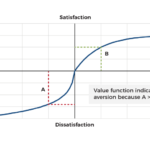Enjoy the current installment of "weekend reading for financial planners" – this week's edition kicks off with the news that the battle over the CFP Board's expanded fiduciary standard is heating up, with both SIFMA and FSI (lobbying firms for broker-dealers) calling for the CFP Board to postpone their fiduciary proposal until at least next year to see what the SEC does, and the CFP Board responding that it still intends to move forward (and putting to rest the criticism that CFP Board is solely beholden to its large-firm broker-dealer stakeholders).
Also in the news this week is the announcement that administration of the Broker Protocol is being shifted to a new law firm called Capital Forensics (after complaints arose that the prior law firm Bressler Amery & Ross sat on the news that Morgan Stanley was leaving the protocol and failed to communicate it to the other protocol participants in a timely manner), and a look at how despite the de-regulatory agenda of President Trump the financial advisory industry is facing a slew of new and additional regulatory activity in the coming year from both the SEC and FINRA (not to mention what is already underway with the Department of Labor's fiduciary rule).
From there, we have a series of practice management articles this week, including: a look at some of the new additions on Form ADV that will be required in the coming weeks as firms do their annual updates; the regulatory and compliance issues to consider when hiring non-advisor employees (who still must be overseen by the firm); why fiduciary compliance does not actually require advisors to always use the absolute lowest cost solution for clients; the rise of the "quasi-independent" model of breakaway brokers who join existing independent RIAs that provide solutions to the advisors who often become partners of the firms; the various Millennial archetypes (beyond the increasingly popular "HENRYs") that financial advisors should consider working with; and how to think about developing a special treatment program to deepen your relationship with your top clients (and what we can learn from the airline industries about how to provide differentiated service to your most valuable clients/customers).
We wrap up with three interesting articles, all around the theme saving and spending habits: the first looks at how, in a world of retargeting ads and email marketing, often the best way to save and buy less is simply... to buy less in the first place (which keeps you from being signed up for all those lists in the first place, and helps you get more comfortable in simply enjoying what you already have); the second is a look at how sometimes the best strategy to succeed is simply by using brute force, which can apply to everything from investing (don't try to pick stocks, and instead just own all of them with an index fund) to accumulating for retirement (if your savings rate is aggressive enough, it hardly matters what you actually generate in investment returns!); and the last is an interesting exploration into what is worth spending a little more money on, particularly for those who may be financially successful (or fully financially independent) precisely because they lived a lifetime of frugality... and now can't find out how to flip the switch and actually try to enjoy the money they have!
Enjoy the "light" reading!










